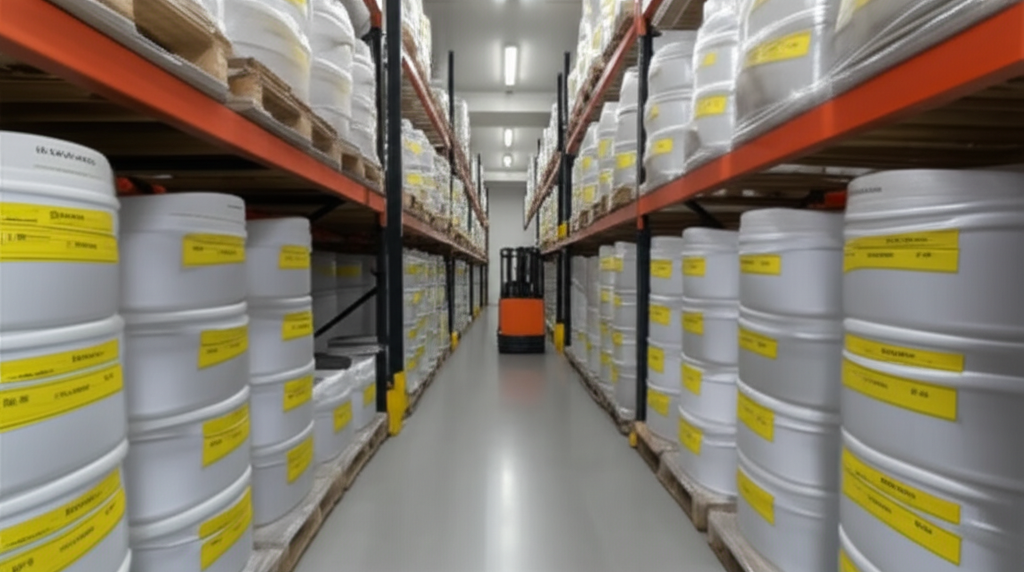4,6-Dichloropyrimidine, a critical nitrogen-containing heterocyclic compound, serves as an essential intermediate in the production of various agrochemicals and pharmaceuticals. This compound is pivotal for manufacturing herbicides, insecticides, and fungicides due to its antifungal properties and plant growth regulation abilities. Additionally, it forms complexes with metal ions, enhancing drug persistence, reducing animal toxicity, and extending shelf life. With increasing global demand for such chemicals, the need for an efficient, sustainable synthesis method has become paramount. However, traditional approaches faced significant limitations, including low yield, high waste, and environmental hazards. An innovative new process has now been developed to address these challenges, promising higher efficiency and improved environmental stewardship.
Currently, the primary methods for synthesizing 4,6-dichloropyrimidine involve chlorination using phosphorus oxychloride (also known as phosphene oxychloride) or solid phosgene. For instance, converting 4,6-dihydroxypyrimidine with phosphorus oxychloride in the presence of triethylamine is the most common industrial route, but it generates substantial wastewater and requires costly solvent recovery. The solid phosgene alternative offers no significant improvement, often resulting in lower yields below 85% and complicating byproduct management. These processes often lead to environmental pollution from unutilized solvents and organic residues, prompting a demand for greener alternatives that balance economics with sustainability.
The breakthrough synthesis process introduces optimized steps to overcome these issues, focusing on maximizing yield, purity, and resource recovery while minimizing ecological impact. Key innovations include precise temperature control, solvent reuse, and efficient recycling of byproducts. The method begins in a chlorination reactor, where 4,6-dihydroxypyrimidine is combined with a chlorinating agent—such as phosphorus oxychloride, its mixtures with phosphorus pentachloride, oxalyl chloride, or thionyl chloride—followed by controlled addition of triethylamine to maintain temperatures below 80°C. After a holding phase, the mixture undergoes hydrolysis in a separate reactor at low temperatures (around 5-30°C), a critical step to prevent decomposition and ensure high-quality intermediates.
Following hydrolysis, the process incorporates multiple recovery stages to enhance sustainability. In the subsequent phases, the mixture is filtered to separate unwanted solids, such as triethylamine hydrochloride, which is then treated with water and sodium hydroxide or potassium hydroxide solutions. This alkaline washing step at controlled temperatures (40-50°C) neutralizes acids, allowing layers to separate; the upper organic layer yields reusable solvents and byproducts, while the aqueous layer is processed to recover water and triethylamine for reuse. Further steps involve settling in a partition tank at 30°C to isolate valuable oils, followed by solvent removal using petroleum ether. This phase includes centrifugation for refining the product and distillation to reclaim solvents like dichloroethane and petroleum ether under vacuum conditions (up to -0.1 MPa), ensuring minimal loss. Finally, vacuum drying at elevated temperatures (70-80°C) under high vacuum (exceeding -0.097 MPa) produces the crystalline 4,6-dichloropyrimidine, completing the cycle with high efficiency.
The most compelling advantages of this new process lie in its remarkable yield and purity improvements. Real-world tests demonstrate consistent outcomes, with yield exceeding 90% and purity levels above 95%—a significant leap from previous industry standards. For example, trials with different chlorination agents achieved up to 98.3% purity and 95.3% yield when phosphorus oxychloride was used alongside optimized distillation. Similarly, variations involving thionyl chloride yielded 96.9% purity, while oxalyl chloride experiments resulted in 93.2% yield. This robustness underscores the method's versatility, as it readily adapts to multiple agent choices while maintaining outstanding product quality. Importantly, the high yields drastically reduce raw material consumption and production costs, making it an economically viable solution for large-scale commercialization.

Beyond yield enhancements, the process emphasizes environmental responsibility through comprehensive waste recovery. Byproducts such as phosphoric or oxalic acid solutions are efficiently segregated, sold, or recycled, turning potential pollutants into revenue streams. Solvents like dichloroethane and petroleum ether are reclaimed during distillation, cutting down on chemical usage and hazardous waste generation. This aspect reduces toxic emissions and wastewater discharge, aligning with global green chemistry principles. As a result, manufacturers can achieve resource savings of around 20-25%, significantly lowering the ecological footprint compared to traditional methods. The leftover residues from distillation are safely handled as hazardous waste, preventing soil and water contamination and meeting stringent regulatory standards.
This innovation represents a major advance for industries reliant on 4,6-dichloropyrimidine, contributing to sustainability goals and cost efficiency in agrochemical and pharmaceutical sectors. Its strong practicality and scalability, with proven industrial application in experimental setups, ensure it can be rapidly adopted worldwide. Ultimately, the new process not only optimizes chemical synthesis but also supports a circular economy, where waste reduction and recovery drive long-term environmental protection. Continued improvements could further boost its appeal, such as integrating renewable energy sources or reducing energy inputs during drying phases.
Manufacturing Facilities






Professional Export Experience
to Global Customers

1. 20 years of R&D, manufacturing and sales experience, serving customers in 60 countries and regions around the world;
2. Own R&D laboratory, pilot platform and large-scale production workshop, which can meet the audit requirements of global customers;
3. We can satisfy customers' perfect transition from small scale lab requirements (gram level) to commercialization requirements (hundred tons level).
A: We don't have Minimum Order Quantity, exact quantity should be provided before quotation for us to calculate the exact cost.
A: We don't provide free samples due to lots of request and expensive international courier's cost, we can deduct the sample charge after commercial order placed.
A: Our payment terms: Small or sample order: T/T IN ADVANCE. Commercial order: First order should be by T/T IN ADVANCE or L/C at sight, and following orders T/T 30~90days is acceptable subject to approval of credit application.